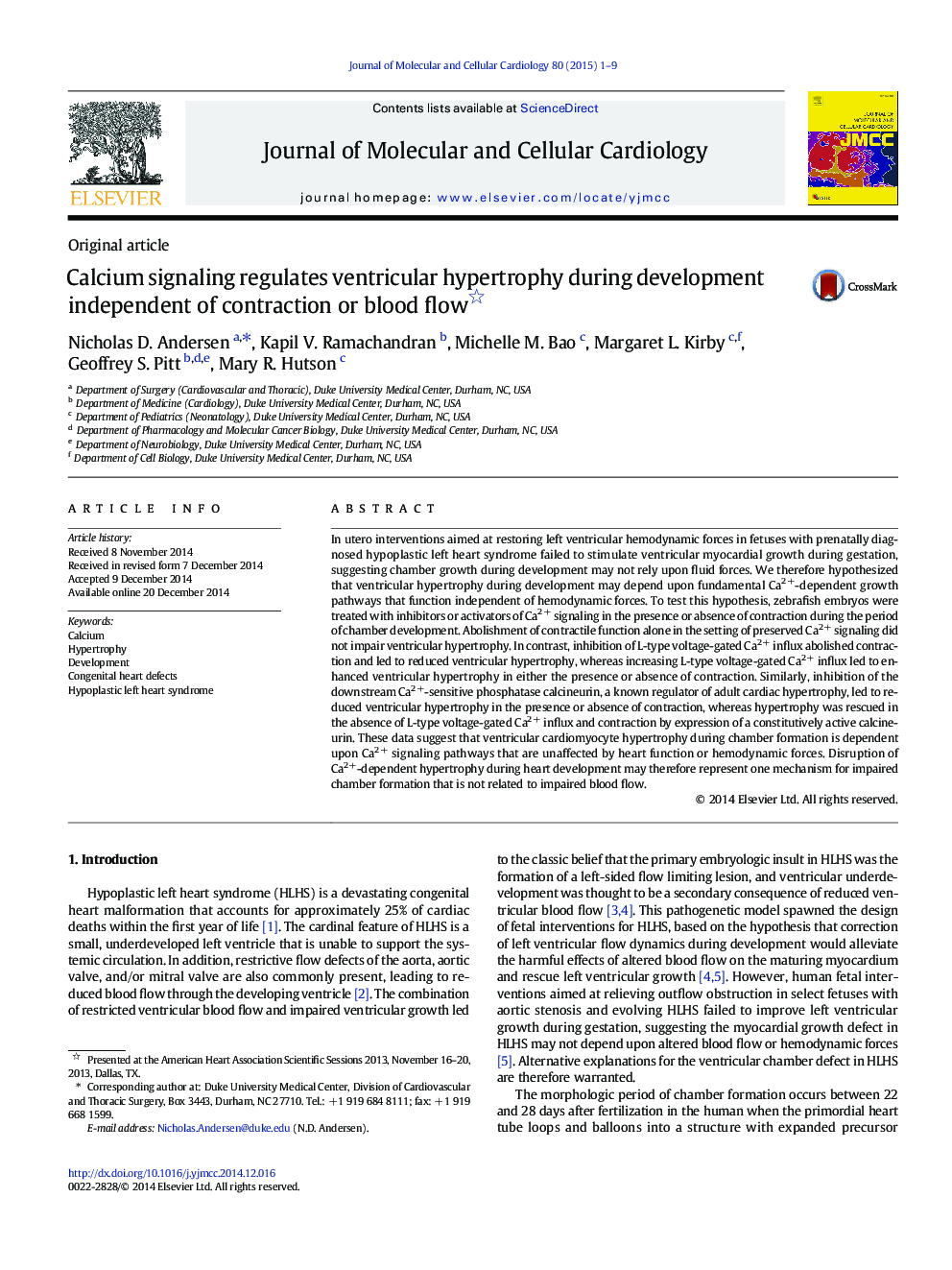| Article ID | Journal | Published Year | Pages | File Type |
|---|---|---|---|---|
| 8474373 | Journal of Molecular and Cellular Cardiology | 2015 | 9 Pages |
Abstract
In utero interventions aimed at restoring left ventricular hemodynamic forces in fetuses with prenatally diagnosed hypoplastic left heart syndrome failed to stimulate ventricular myocardial growth during gestation, suggesting chamber growth during development may not rely upon fluid forces. We therefore hypothesized that ventricular hypertrophy during development may depend upon fundamental Ca2Â +-dependent growth pathways that function independent of hemodynamic forces. To test this hypothesis, zebrafish embryos were treated with inhibitors or activators of Ca2Â + signaling in the presence or absence of contraction during the period of chamber development. Abolishment of contractile function alone in the setting of preserved Ca2Â + signaling did not impair ventricular hypertrophy. In contrast, inhibition of L-type voltage-gated Ca2Â + influx abolished contraction and led to reduced ventricular hypertrophy, whereas increasing L-type voltage-gated Ca2Â + influx led to enhanced ventricular hypertrophy in either the presence or absence of contraction. Similarly, inhibition of the downstream Ca2Â +-sensitive phosphatase calcineurin, a known regulator of adult cardiac hypertrophy, led to reduced ventricular hypertrophy in the presence or absence of contraction, whereas hypertrophy was rescued in the absence of L-type voltage-gated Ca2Â + influx and contraction by expression of a constitutively active calcineurin. These data suggest that ventricular cardiomyocyte hypertrophy during chamber formation is dependent upon Ca2Â + signaling pathways that are unaffected by heart function or hemodynamic forces. Disruption of Ca2Â +-dependent hypertrophy during heart development may therefore represent one mechanism for impaired chamber formation that is not related to impaired blood flow.
Related Topics
Life Sciences
Biochemistry, Genetics and Molecular Biology
Cell Biology
Authors
Nicholas D. Andersen, Kapil V. Ramachandran, Michelle M. Bao, Margaret L. Kirby, Geoffrey S. Pitt, Mary R. Hutson,
